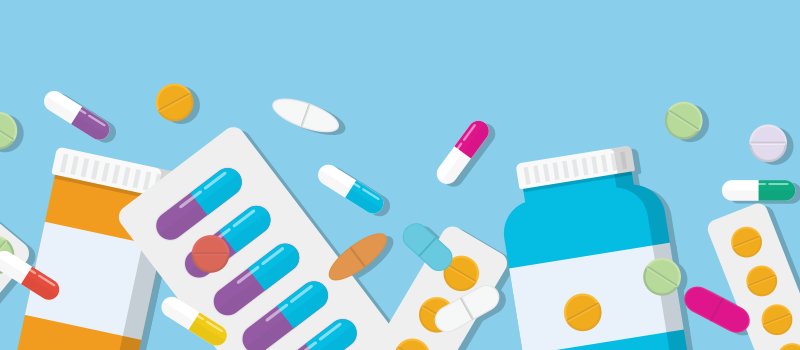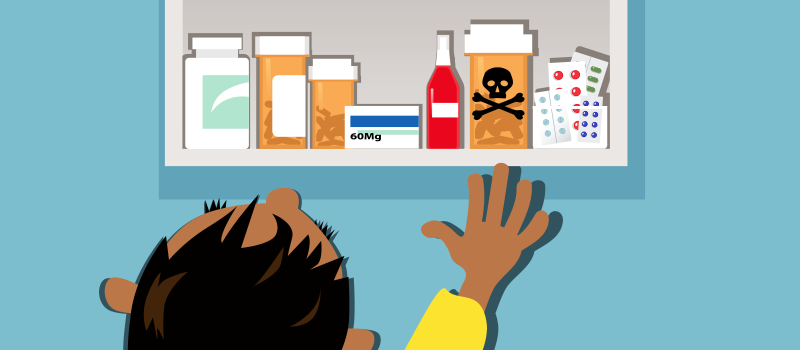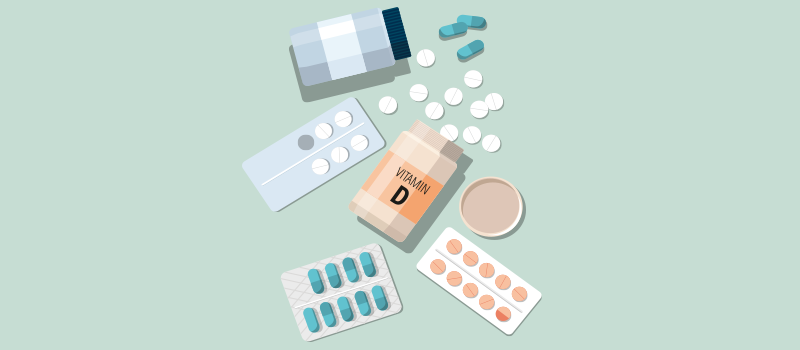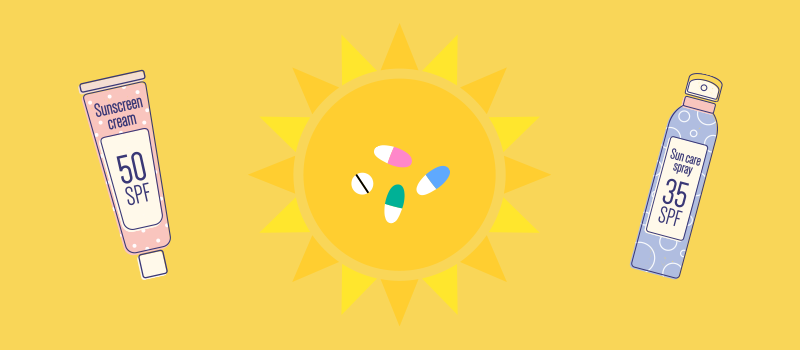What’s the Buzz
The Bee Healthy Blog
Pantoprazole (Protonix) Diet Do’s and Don’ts

Pantoprazole (brand name: Protonix) belongs to a group of medications called proton pump inhibitors. It is commonly prescribed for gastroesophageal reflux disease (GERD), a condition that affects approximately 1 in 5 adults in the US. Please continue reading to learn more about taking pantoprazole (Protonix) correctly and eating a diet that can help control GERD symptoms.
What are proton pump inhibitors?
Proton pump inhibitors (PPIs) are a group of drugs that reduce the amount of gastric acid made by the glands in the stomach lining. Gastric secretion is a normal body process that is vital to digest and absorb the nutrients of the food you eat. However, excessive gastric acid is responsible for acid reflux and other heartburn symptoms. As a natural defense mechanism, the gastric mucosa (a layer of mucous membrane in the stomach) produces a thick mucus layer to help neutralize the effects of the stomach’s acidic environment.
On the other hand, PPIs are one of the common drug classes used to relieve symptoms of gastroesophageal reflux disease and treat peptic ulcer disease (duodenal ulcers and stomach ulcers). In addition to their role in relieving the symptoms of acid reflux, PPIs are also used to prevent and treat erosive esophagitis (damage to the lower esophagus by stomach acid) and help the lower esophagus heal from damage caused by acid reflux (backflow of stomach acid into the esophagus).
In addition, PPIs are used to treat Helicobacter pylori (H. Pylori) infections, a bacterial infection of the stomach. Proton pump inhibitors are also used to treat certain rare disorders, such as Zollinger-Ellison syndrome, in which there is excessive gastric acid secretion.
Some proton pump inhibitors are available both with a prescription and over the counter, for example, omeprazole (Prilosec), esomeprazole (Nexium), lansoprazole (Prevacid), and a combination of omeprazole and sodium bicarbonate (Zegerid).
Other PPIs are only available with a doctor’s prescription, for example, pantoprazole (Protonix), rabeprazole (Aciphex), and dexlansoprazole (Dexilant).
How does Protonix treat gastroesophageal reflux disease (acid reflux)?
Protonix (pantoprazole sodium) is a proton pump inhibitor. It works by reducing stomach acid production and is used to treat conditions where there is too much acid in the stomach. Specifically, PPIs block the activity of the pumps in the stomach that produce excessive levels of acid.
What is the usual Protonix dose?
- Erosive esophagitis associated with GERD: The typical dose of Protonix in adults is 40 mg once a day for up to eight weeks. For children 5 years and older weighing between 15 and 39 kg, the dose is 20 mg once a day. Similar to adults, the treatment duration is typically 8 weeks unless instructed otherwise by the provider.
- Maintenance of healing of erosive esophagitis: The typical dose for adults is 40 mg by mouth once daily.
- Conditions causing hypersecretion of stomach acid such as Zollinger-Ellison Syndrome: The typical dose for adults is 40 mg by mouth twice daily.
Read the prescription label carefully and take Protonix as prescribed. Ask your healthcare provider if you have any questions about taking pantoprazole correctly. Try to take your medicine at around the same time every day. This will help you remember to take it.
In case of a missed dose, take it as soon as you remember. However, if it is almost time for your next dose, skip the missed dose and take the next dose according to your regular dosing schedule. Do not take a double dose to make up for a missed dose.
What do you take Protonix with?
Protonix (pantoprazole) tablets are taken orally with water. They are delayed-release tablets that are designed to release the medicine after the tablet reaches the small intestine. This is to prevent the medicine from being broken down by stomach acid. You can take pantoprazole tablets with or without food. For GERD symptoms, they are usually taken once a day in the morning.
Protonix also comes in the form of granules. These should be taken on an empty stomach at least 30 minutes before you eat. You should mix the granules with one teaspoonful of apple juice or applesauce. Mix it well and consume the mixture within 10 minutes. Remember that it’s important not to mix the granules, even with water, food, or other liquids. Protonix granules only work best with applesauce or apple juice. Do not divide the granules into smaller doses or store the mixture for later use.
Why take Protonix before breakfast?
Taking pantoprazole (Protonix generic) before breakfast makes it more effective in controlling heartburn symptoms throughout the day.
Should you eat when taking Protonix?
You can eat and drink normally when taking pantoprazole (Protonix). However, this medicine works best to control reflux symptoms if you avoid foods that trigger acid reflux.
What can aggravate GERD symptoms?
Certain foods can cause worsening symptoms of acid reflux and should be avoided as much as possible. These foods counteract the effects of a proton pump inhibitor such as Protonix. Foods to avoid if you have acid reflux include fried and fatty foods, acidic foods like citrus fruits, tomatoes, chocolate, and spicy foods. Also, if you drink alcohol, it can worsen your reflux symptoms. Drinking in moderation or avoiding alcohol altogether is therefore advisable.
Some foods, such as lower-acid fruits and vegetables, whole grains, and lean proteins, do not trigger acid reflux and are safe to eat if you have gastroesophageal reflux disease (GERD).
In addition to foods, it is worth noting that certain medications, for example, nonsteroidal anti-inflammatory drugs (ibuprofen, naproxen), can cause heartburn, stomach irritation, and formation of stomach and duodenal ulcers. Give your healthcare professional a complete medical history and a full list of all your medications, whether it is a medication prescribed by a healthcare provider or something you take over the counter.
Eating right before you go to sleep can also worsen your heartburn symptoms. If you haven’t already, elevating the head of your bed between 6 to 8 inches has been found to be beneficial in relieving GERD symptoms.
Can you drink coffee while taking pantoprazole?
Coffee and other caffeinated drinks relax the lower esophageal sphincter (LES). The LES is a ring-like muscle at the lower end of the esophagus that acts as a one-way valve and prevents the backflow of stomach acid into the esophagus. Also, caffeinated drinks can increase the amount of acid the stomach produces, which can counteract the effects of Protonix.
It is best to limit caffeine consumption as much as possible if you have acid reflux and heartburn symptoms. Also, it is a good idea to take your pantoprazole (Protonix) at least one hour away from any caffeinated beverage.
What are the risks of taking a proton pump inhibitor?
Some of the risks of taking pantoprazole include:
- Pantoprazole and other PPIs can have drug interactions with other medicines. Give your healthcare provider a complete list of your medications, including prescription drugs, over-the-counter medicines, dietary supplements, and herbal products to avoid serious adverse effects. Talk to your doctor or pharmacist before you start a new medication.
- Pantoprazole can cause side effects such as headache, dizziness, gas, nausea, vomiting, diarrhea, and joint pain.
- Some people can have an allergic reaction to pantoprazole. Tell your doctor immediately or seek emergency medical help if you develop a skin rash, stomach pain, muscle spasms, chest pain, or difficulty breathing after taking the medicine.
- A PPI such as pantoprazole can reduce stomach acid and relieve acid reflux symptoms. However, this does not rule out the presence of a serious underlying condition such as a gastric malignancy.
- Long-term use of PPIs has been linked to atrophic gastritis (chronic inflammation and thinning of the stomach lining) and benign stomach growths called fundic gland polyps.
- Prolonged PPI therapy is also associated with an increased risk of osteoporosis and bone fractures of the hip, wrist, or spine.
- There are rare reports of hypomagnesemia (low magnesium) with long-term PPI treatment.
References:
- https://www.ncbi.nlm.nih.gov/books/NBK441938/#
- https://medlineplus.gov/ency/patientinstructions/000381.htm
- https://medlineplus.gov/druginfo/meds/a601246.html
- https://dailymed.nlm.nih.gov/dailymed/drugInfo.cfm?setid=72f82e7c-fdfb-4d54-8161-944ba00b700e
- https://www.pfizermedicalinformation.com/en-us/protonix
- https://www.ncbi.nlm.nih.gov/pmc/articles/PMC8778943/#












SOCIAL